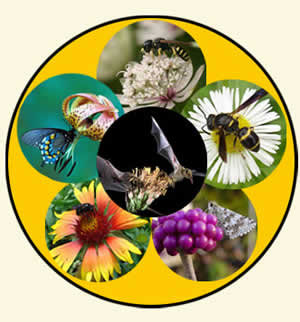
Pollinators: butterflies, bats, bees, and other insects. USDA Forest Service
Now that spring has finally arrived in the northeast, it’s time to think about the growing season–and about the pollinators that many of our plants are dependent upon: bees, butterflies, and bats, to name a few. However, these pollinators are at risk, largely due to agricultural practices. Native flowering plants have been displaced by cropland, and pesticides also pose a risk to many pollinators.
(For more, see this NY Times article.)
So, how can we help? Plant native flowering species! Organizations like the Pollinator Partnership make this easy by providing information on pollinators and their preferred plant species–with guides tailored to each ecoregion in the US. Just find your ecoregion to download a guide explaining why and how to help pollinators, complete with a list of native plants that offer food and/or shelter to local pollinators. Or you can download the BeeSmart app to take this information on the go.
You can also visit Plant Native for a list of native species and nurseries that carry native species. For more information on pollinators and how to help, you can also visit USDA’s Forest Service Pollinator page, or the North American Pollinator Protection Campaign.
Pollinators are a crucial part of the reproduction of flowering plants and many of our food crops, so let’s see if we can help them out however we can. Provide vegetation that offers suitable habitat for pollinators, even if only in a pot or window-box.
Happy gardening!
